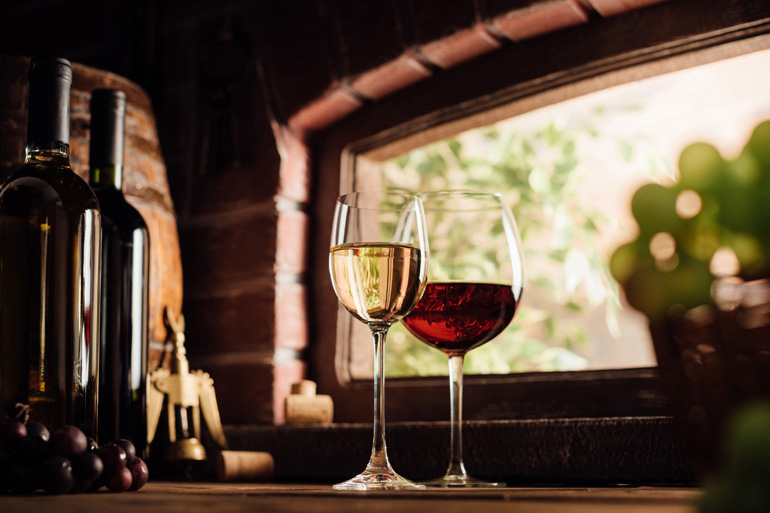One of the factors that considerably marks the taste of a wine is the composition of the several castes that it is made of, and that transmit a unique character to the final product.

Between reds and whites, there are almost 300 native castes of the Vitis vinífera species in Portugal, allowing for the production of a large variety of wines, with very distinct personalities.
Among the major Portuguese grape species – the castes – one finds Touriga Nacional, with a distinct aroma of violets, bergamots, wild berries and rock rose, as well as some nuances of pine needles; the Baga, a vigorous caste of late ripening, with bunches of small sized grapes, and the most appropriate variety for the composition of Bairrada wines; Castelão, predominant south of the Tejo river, is acid in the palate, with an aroma of cherries and currants; Touriga Franca, with a nicely and sophisticated balance of roses, wild berries and black cherries, is the base for wines such as the Douro Tinto Reserva Edl; and finally, the Trincadeira, that reveals fragrances of wild berries and some vegetable accents, particularly used in Alentejo’s regionally produced wines, such as the Vinho Regional Alentejano Tinto Reserva.
Among, the Portuguese white species, the Alvarinho, used in the production of the wine with the same name, is typical to the northwestern area of the Iberian Peninsula, and strikes a tasty note, reason why is considered one of the most pleasant of the Portuguese varieties; the Loureiro, from the green wines (vinho verde) region along the Lima River, has a distinctive laurel aroma and is accountable for the fame of the Loureiro Branco Vinho Verde; Arinto, shows an acidic taste and a strong aroma of tropical fruits, a characteristic feature in the white wines from Alentejo; the Encruzado, only present in the Dão region, is considered a caste of unmistakable quality, and allows for the production of well- thoughtful and structured varieties; Fernão Pires, with a sweet, Moscatel aroma and some hints of roses and lychees, is Setúbal’s best known variety; the Moscatel, an aromatic wine also from the Setúbal region and, finally, the Malvasia Fina, present in the northern interior part of the country, produces discreet and not so intense wines.
Article in a Bestguide and Porta da Frente partnership
